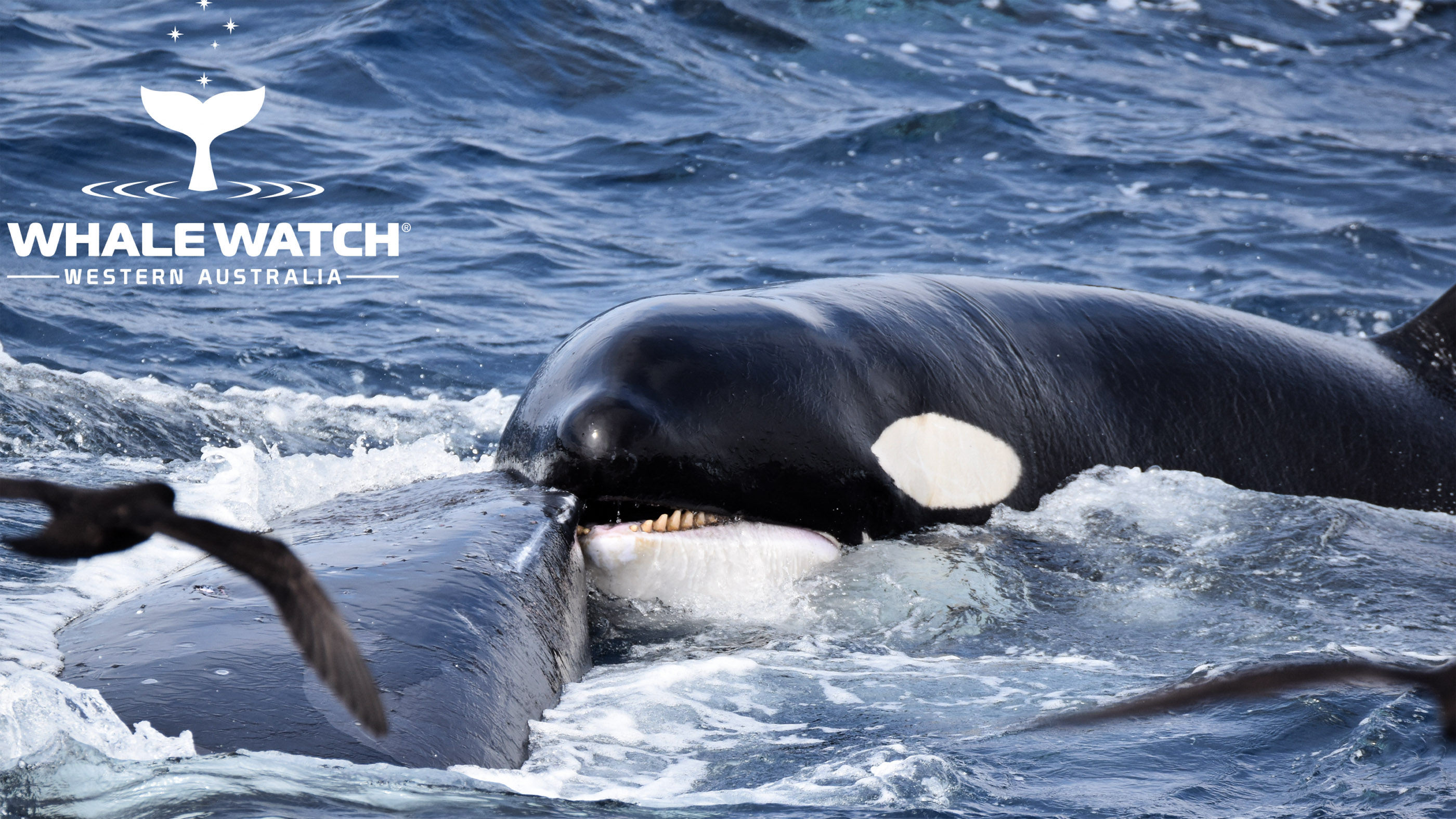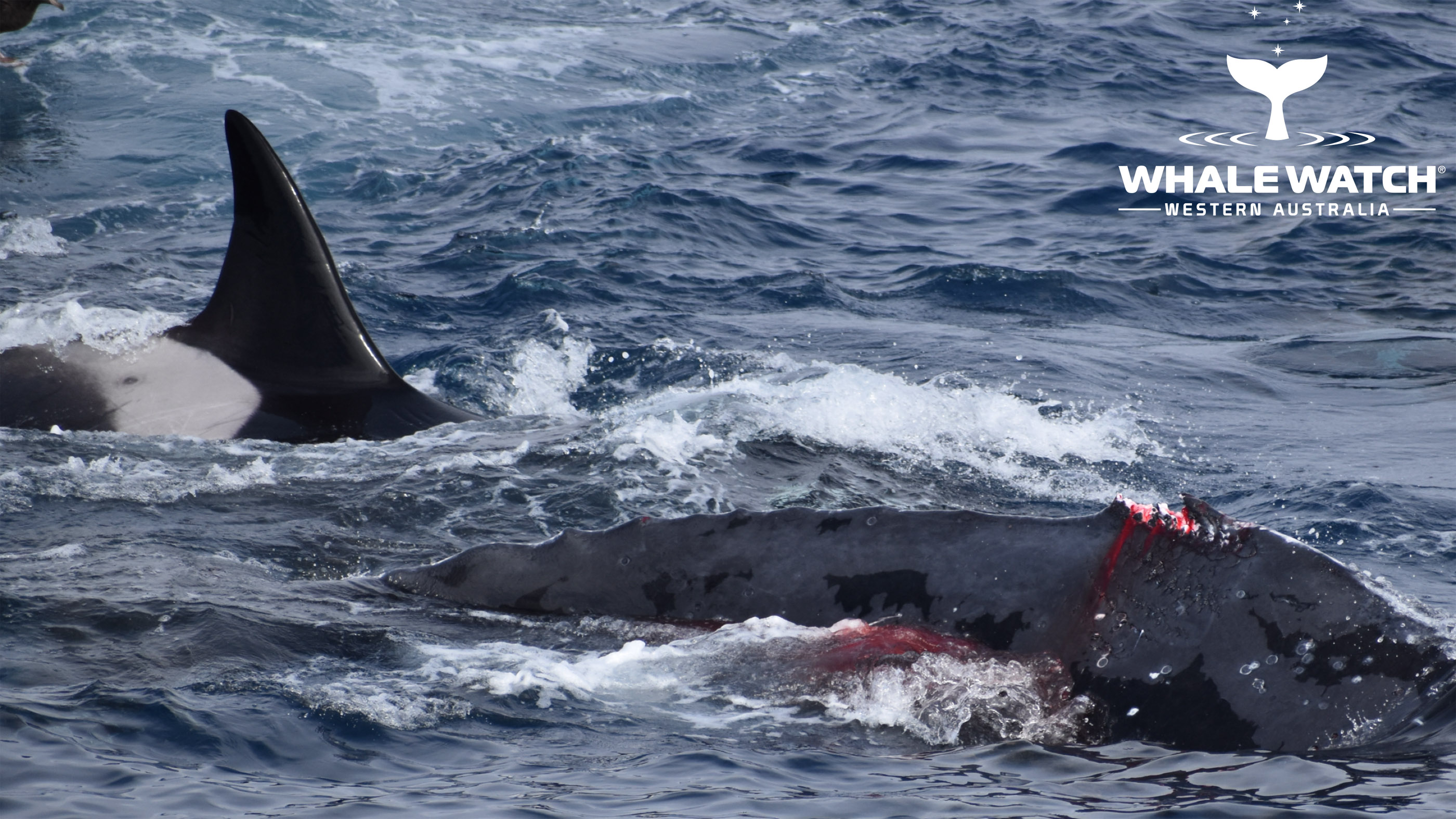Humpback whale survives 4-hour attack by gang of orcas
The orcas took his dorsal fin, but not his life.
Whale watchers in Australia witnessed a rare sight last week: Two pods of orcas ganged up on and attacked a healthy young humpback whale.
The whale, a 2- to 3-year-old male, survived the onslaught, though he lost his dorsal fin, according to the Sydney Morning Herald.
"We knew we were witnessing something significant," Gemma Sharp, the co-owner of Whale Watcher Australia, who was present during the attack on Feb. 17, told the newspaper. "The orca were in full-on attack mode and the humpback was desperately trying to protect itself."
Related: Photos: Russia’s beautiful killer whales (orcas)
Sharp and a boat full of whale watchers were in Bremer Bay in Western Australia when they spotted about 15 orcas splashing at the surface. They soon realized the predators were surrounding a humpback whale (Megaptera novaeangliae). As the humans watched, the orcas tried again and again to grab the humpback's dorsal fin to flip the whale over and drown it.


The flip-and-drown tactic often works on whale calves and yearlings, Sharp said, but the young male was too strong and large for the orcas to budge him. The whale made a beeline toward the boat, taking cover underneath it for almost an hour.
As the orcas circled, hoping for another chance at the humpback, the commotion attracted a group of 50 pilot whales and a group of bull sharks. Eventually, one of the orca pods left.
Sign up for the Live Science daily newsletter now
Get the world’s most fascinating discoveries delivered straight to your inbox.
Another pod of six orcas waited about 980 feet (300 meters) away from the boat until the humpback decided to make a break for it. The largest orca, a 19,800-pound (8,980 kilograms) male nicknamed El Notcho by the area's whale watchers, tried to ram the humpback and break his jaw. The attack didn't faze the humpback, Sharp told the Herald.
That's when the orcas gave up. The humpback sped toward the coast.
"They did take his [dorsal] fin, but his tail flukes and pectoral fins were all fine, which is important. If they exhale blood … that’s always a real concern but there was none of that," Sharp said.
The whale-watching crew captured the attack on video, which is the first documentation of such an attack in Bermer Bay, she said.
Orcas, also called killer whales, are known for their sometimes violent interactions with other marine animals. In 2018, a photographer captured first-of-its-kind footage of a pod of orcas tormenting (or playing with, depending on your perspective) sea turtles off the Galápagos Islands. The orcas were essentially treating the turtles as pool toys, spinning and dragging them around as a form of entertainment, Live Science previously reported. In another instance, this time in 2016, a pod of orcas near the Antarctic peninsula circled a lone seal on an ice floe. Fortunately, two humpback whales came to the rescue, saving the Weddell seal from becoming orca dinner, Live Science reported.
Originally published on Live Science.

Stephanie Pappas is a contributing writer for Live Science, covering topics ranging from geoscience to archaeology to the human brain and behavior. She was previously a senior writer for Live Science but is now a freelancer based in Denver, Colorado, and regularly contributes to Scientific American and The Monitor, the monthly magazine of the American Psychological Association. Stephanie received a bachelor's degree in psychology from the University of South Carolina and a graduate certificate in science communication from the University of California, Santa Cruz.









